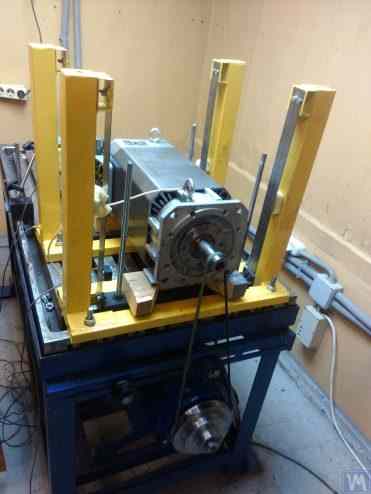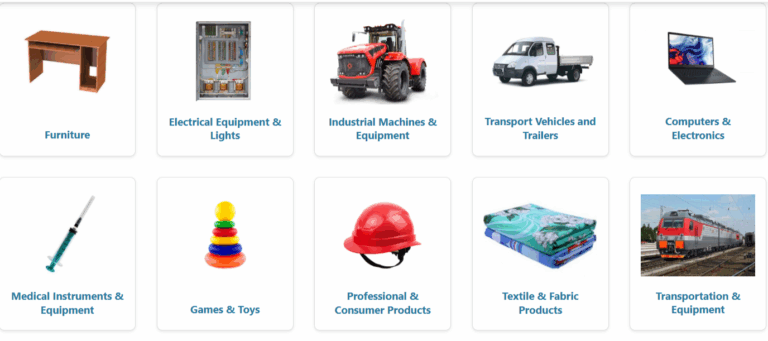Hard Bearing Balancing Machines
1. Design Features
Hard bearing balancing machines are pre-resonance type machines. Their key feature is very rigid supports designed such that their resonant frequencies are significantly higher than the rotor’s maximum rotation frequency. This configuration allows the machine to operate outside the resonance zone, ensuring greater measurement accuracy even at low speeds.
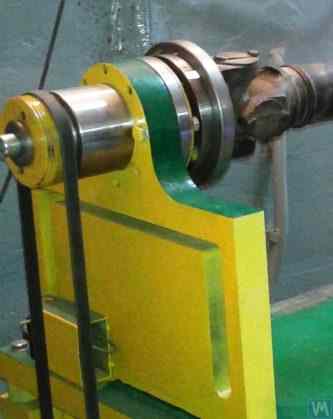
The supports typically consist of massive plates with figured slots or cuts, creating areas of controlled flexibility. During balancing, the forces from rotor imbalance cause slight relative deformation of these support parts.
2. Operating Principle
The rotor requiring balancing is mounted on the machine with hard bearings.
- The rotor is accelerated to the required rotation speed.
- The forces generated by the rotor’s imbalance are transmitted through the bearings to the machine’s external support parts.
- The external part of the supports begins to deform cyclically relative to the static inner part (usually this deformation is very minor).
For measuring this deformation, special sensors are used:
- Force sensors (piezoelectric sensors): measure the force acting on the support.
- Non-contact displacement vibration sensors: these high-precision sensors track microscopic displacements of the support parts.
The signals from the sensors are then processed by the machine’s measuring and computing system, which determines the magnitude and angular position of the imbalance, and calculates the masses and placement of correction weights.
3. Advantages of Hard Bearing Machines
Hard bearing machines are versatile: suitable for precise balancing of rotors across a wide range of masses and sizes. They can perform high-precision balancing at low rotation speeds (200-500 RPM), which in some cases is close to the rotor’s operating conditions. These machines provide a high level of balancing accuracy.
4. Disadvantages of Hard Bearing Machines
Due to their rigid supports and precision sensors, hard bearing machines are more complex compared to resonance machines. As a result of this complexity, hard-bearing machines are more expensive.
5. Applications of Hard Bearing Machines
Hard bearing machines are the best choice when:
- Diverse rotors by mass and shape need to be balanced.
- Especially high precision in balancing is required.
- Balancing at low rotation speeds is preferred.
Soft Bearing Balancing Machines
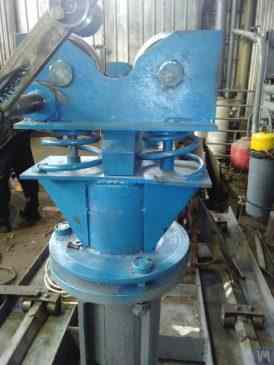
Unlike hard bearing machines, soft bearing balancing machines are of the resonance type. Their key distinction lies in the construction of the supports: they are relatively flexible, with resonant frequencies several times lower than the rotor’s rotation frequency.
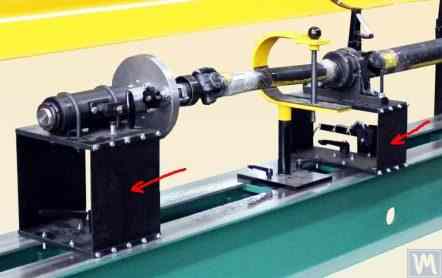
Differences from Hard Bearing Machines
Soft bearing machines do not directly measure imbalance forces. Instead, when the rotor rotates, the flexible supports vibrate due to centrifugal forces from the imbalance. Special vibration sensors mounted on the supports measure the magnitude and phase of this vibration. The machine’s measuring and computing system analyzes signals from the sensors, determining the imbalance and the necessary corrective weights.
Advantages and Disadvantages of Soft Bearing Machines
Soft bearing machines are simpler and less expensive, highly sensitive to imbalances, and provide good quality balancing for light rotors. However, they have limitations regarding the rotor’s mass and cannot operate at critical frequencies.
For more information on the tools and methods used in both hard and soft bearing balancing machines, consider exploring detailed resources such as Balanset devices for practical insights and applications.
